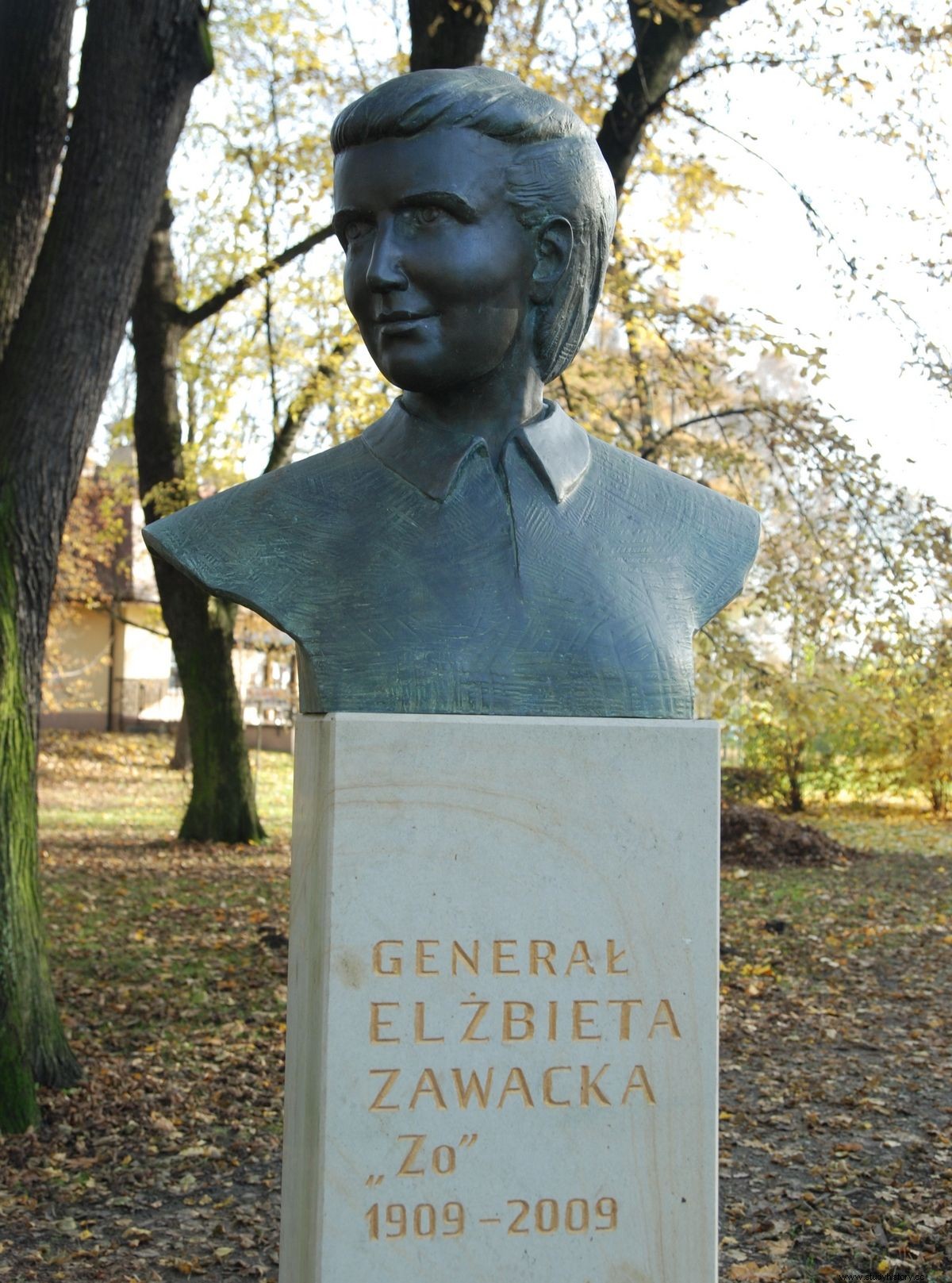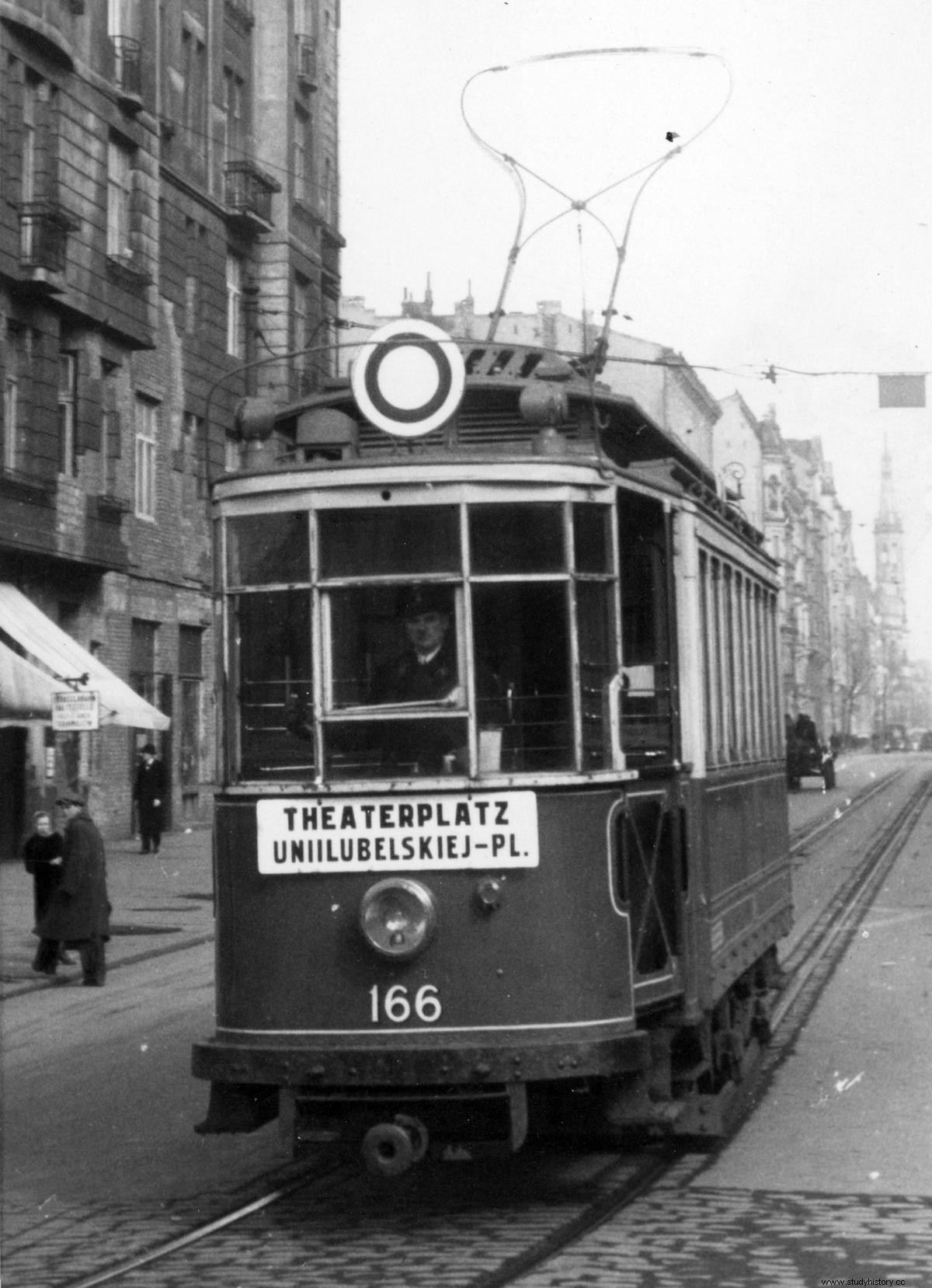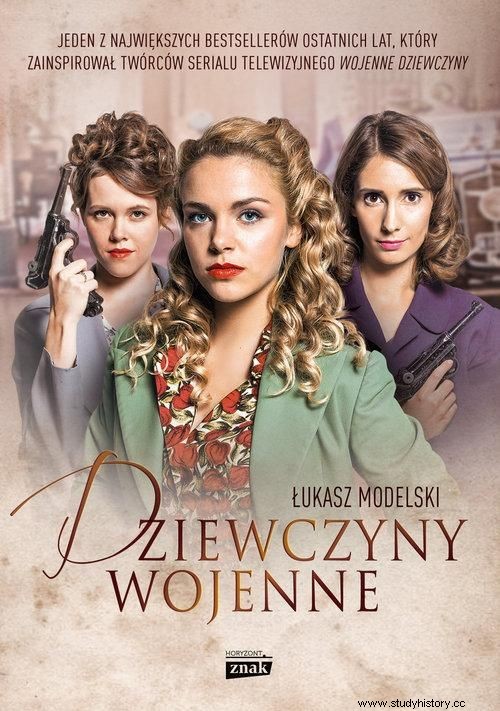They escaped from a speeding train, fired in the uprising, produced explosives, hid Jews. There were no impossible tasks for the bravest women in occupied Poland. Despite their young age, they had nerves of steel. Meet the five greatest characters.
Magda Rusinek. Agent for special tasks
In 1942, 17-year-old Magda Rusinek joined the liquidation group of Department 993 / W in the Security and Counterintelligence Department of the Home Army Headquarters. In intensive training - including endurance training, shooting, stress management - the instructor screamed "that the women should stay at home and wash their pants for the peasants."
Instead of washing clothes, she investigated people who were sentenced to death by the underground court, mostly blackmailers and Gestapo informants.
It fell into the hands of the Germans by accident, during a round-up in the street. She found her way to the Pawiak, and from there to the transport to Majdanek, she miraculously managed to escape from the train. She returned to Warsaw and took care of saving children from the ghetto. The superiors from the organization agreed, knowing that for helping Jews, the Germans would kill them immediately - without arrest and interrogation, during which Magda could spill her colleagues from the underground.
Although many children passed through her hands, she remembered the case of Adaś, a young boy whose mother had hidden in a hole dug in the ground after escaping from the ghetto. Jamie has been set on fire. The mother entrusted the severely burned boy to Magda. Despite the help of a doctor, the boy did not survive.

Magda Rusinek in a photo from 1948. A photo from the book "War Girls" (Znak Horyzont 2017).
Magda packed the body in a bag and got on a tram to get to the place where Adam's mother dug a hole. She wanted to bury him there. Suddenly the tram stopped. Round-up. Magda brazenly ran up to the German gendarme with complaints that she was working for the Germans and had an urgent task to do. The gendarme cut the string and the child's body fell onto the pavement. The Germans got scared and left.
During the Warsaw Uprising, Magda was a liaison officer for Colonel Kazimierz Iranek-Osmecki, head of the 2nd Department (information and intelligence) of the Home Army Headquarters for a week. Then she became a shooter. "I shot like everyone else, I also specialized in throwing away grenades", we learn from Magda Rusinek's account in the book "Girls of war" Łukasz Modelski.
At the end of the uprising, the command of the Home Army, including Tadeusz Bor-Komorowski, was carried out through the sewers. Absolute silence was necessary during the passage, so the guide without hesitation shouted at the commanders when they allowed themselves to talk loudly. After the capitulation, she was sent to the camp in Lamsdorf. After the liberation, she became the interpreter of General Patton's officers for contacts with Poles.
Irena Sendler. Human Duty
Irena Sendler saved more Jews than Oskar Schindler, and yet her story was kept in silence for many years. At the outbreak of the war, a modest employee of the Civic Committee for Social Welfare became involved in underground activities. In order to help the most needy - Jewish children from the Warsaw ghetto - Irena got involved with Żegota (the code name of the underground Council to Aid Jews), where she became the head of the children's department.
Thanks to her employment in the Social Welfare Committee, she had access to the ghetto. Officially, she entered the gate to carry out disinfection. However, she was doing something completely different:smuggling food, medicine, money, clothes. However, according to Irena, it was an emergency. She realized that the only way to save Jews was to escape from the ghetto. With the support of Żegota, she organized a campaign to smuggle children from the Jewish quarter.
Dangerous ventures required courage, self-control, creativity and extensive contacts on the Aryan side. Sendler's creativity knew no bounds. She took children in packages, took them away hidden in an ambulance, and led them through the passage in the court building in Leszno. There was no single road or one proven route. Sometimes it was possible to use the tram and rely on the help of an insider driver, often the child had to be put to sleep so that it would not cry on the way.

Irena Sendler saved the lives of 2,500 Jewish children. However, she never considered herself a hero.
In the ghetto, Irena wore an armband with a star, she did not want to stand out in the crowd. It acted quickly and efficiently right under the very nose of the Germans. She managed to take out 2,500 children. She wrote down the names and surnames of the children and the addresses of the hiding places on the Aryan side on cards. In this way, she created a large file which she kept in her own apartment. She was aware that the Gestapo could come for her any day.
Anyway, it happened so, fortunately, during the search of the apartment, they did not find any files or incriminating documents. Irena was imprisoned in Pawiak, her friends from Żegota helped her get free. Sendler never considered herself a hero, she said that she was simply doing a human duty.
Elżbieta Zawacka "Zo". The only quiet and dark
Under the pseudonym Elisabeth Watson, she made a dangerous journey through half of Europe in the middle of the war. As an emissary of the Commander-in-Chief of the Home Army, Stefan Rowecki, she set off through Germany, France, Andorra, Spain and Gibraltar to the Staff of the Commander-in-Chief in London. It was "Zo" who demanded in London that women should be given the status of soldiers.

Elżbieta Zawacka was the only woman in the ranks of the Cichociemni. The photo shows her monument in the Jordan Park in Kraków.
She was the only woman among the famous "Cichociemni", considered to be the elite of Fighting Poland, Polish soldiers trained in Great Britain for special tasks. She crossed the country's borders many times, carrying orders, microfilms, reports and money. She hid secret information in a key handle or a lighter. Sometimes she rode in the passenger compartment, pretending to be a German woman, sometimes she covered a long distance hidden in a steam locomotive's tender (water tank). She was wading through the snow over the Pyrenees passes and parachuting.
In Poland, the Gestapo was on her heels, she miraculously avoided arrest by jumping out of a speeding train. During her unlucky trip from Krakow to Warsaw, she was watched by German informants, they followed her because they hoped that she would lead them to the Home Army authorities. "Zo" managed to confuse them, jumped off the train when the Germans thought she was in the toilet.
In order to deceive the enemy, Zawacka invented various tricks, in a tram she got into carriages "Nur für Deutsche ”And carelessly pretended to be German. When she had to carry a larger amount of money across the border, she bought the cheapest, shabby suitcase, stuck its bottom with hundred-dollar bills and glued paper to this layer.

In order to confuse the Germans, Zawacka often used the "Nur für Deutsche" trams.
As she admitted years later, she was afraid of dogs the most. The Germans used the animals during a manhunt or stabbed those arrested during interrogation. Many women from the Home Army were torn apart by dogs. Fear did not paralyze her from undertaking another dangerous mission. Jan Nowak-Jeziorański said that “Zo” was a legend even in the underground environment, where anonymity was respected. Elżbieta Zawacka was one of two female generals in Poland.
Wanda Traczyk-Stawska. A donut on the barricade
During the Warsaw Uprising, Wanda Traczyk "Pączek" was assigned to the disposition unit of general Antoni "Monter" Chruściel. She became a liaison officer and a shooter, although initially she was assigned to the editorial office of "Biuletyn Informacyjny", where she brewed coffee. She couldn't stand idleness, so she arranged for a transfer. She received her own Błyskawica, i.e. a rifle of domestic production, and was treated in the same way as men. During the uprising, women were usually nurses or liaison officers, few of them fought with weapons in their hands.
Wanda carried out reconnaissance, covered the attacking colleagues, shooting at the enemy. She was brave and eager to fight, but the commander warned her against unnecessary bravado. "Monter" was managing Wanda's unit, where the attack was just breaking down. After the fight for the Church of the Holy Cross, Wanda was awarded the Cross of Valor. Although she belongs to the group of the bravest women in occupied Poland, Wanda Traczyk-Stawska does not like to talk about her heroism. We can learn about her achievements from the accounts of fellow insurgents.

"Pączek" is mentioned many times by, among others, Janusz Rola-Szadowski in his book "With a lightning on the tigers":"The German flew into the hall - The donut approaches cautiously, ready peem - he jumps to the door, takes him on target - jam! This is lightning. And this one is already hitting it with a grenade. She has three more seconds of time, she steps back, a grenade explodes in the corridor, black smoke ... ”Instinct saved Wanda many times during the fights.
Basia Matys. Bomb Girl
19-year-old Basia Matys, whose stories are described by Łukasz Modelski in the book Girls of war She took the oath in an old tenement house on Krucza Street. The atmosphere was solemn - a cross and candles on the table. The oath was taken by Dr. Zofia Franio, the organizer of women's miners' patrols. This is where Basia was supposed to go. She quickly began regular training, during which she learned how to shoot, build and place explosives, and neutralize mines. In addition, it also dealt with the transfer of documents, loads and components for the production of explosives. Colleagues from the underground called her and her colleagues from her miners' department "Bombs".
One day, when Basia was transporting a large package on the tram, in which she had hidden two rows of incendiary bottles, the Germans organized a round-up. She was helped by a navy blue policeman who guessed that the girl was carrying something far more dangerous than, as she claimed, vinegar. Should the bottles break, there would be an immediate explosion and everyone would be killed. During the uprising, "Bombs" quickly won the respect of soldiers.

During the Uprising, Basia Matys participated, among others, in the capture of the PAST building.
At the beginning of the fighting, they mounted grenades, which the insurgents threw at the tanks attacking the Military Publishing House. The German attack was stopped. Basia, along with a few friends, ended up in the WZW shield ward at the disposal of Antoni Chruściel "Monter". The girls took part in sapper actions, including the first attack on the PAST building.
They had to set up a demolition mine in the wall of the building adjacent to PAST. In the uprising, Basia also took part in the transfer of weapons warehouses right under the Germans' noses and acted as a nurse:she pulled fragments of shells from her injured colleagues. The miners' department consisted of registered nurses.
